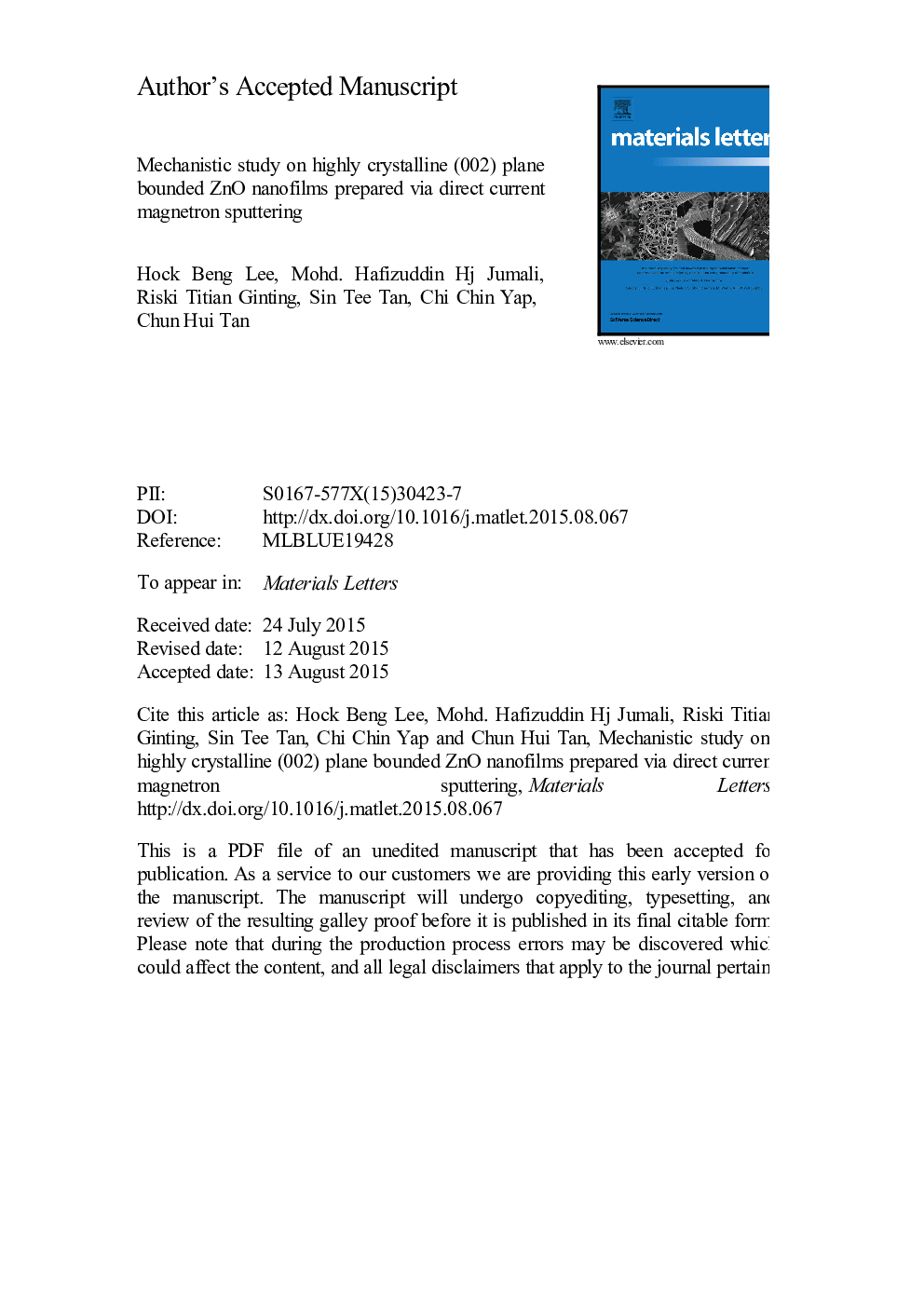| Article ID | Journal | Published Year | Pages | File Type |
|---|---|---|---|---|
| 8017772 | Materials Letters | 2015 | 14 Pages |
Abstract
ZnO nanofilm has been irreplaceable especially in nanoscale researches due to the unique tunability of its morphology and semiconductor properties, suiting the needs of different applications. In present work, we employed direct current (DC) magnetron sputtering technique to deposit ZnO films, aiming to elucidate the relationship between sputtering pressure and the morphology, crystallinity and defect states of the films. The sputtering pressure was deliberately varied at low pressure regime and highly crystalline (002) plane bounded ZnO nanofilms were successfully prepared at the pressure condition of 15.0Â mTorr. With increasing sputtering pressure, photoluminescence analysis indicates that more intrinsic defects were created in ZnO lattice structure. In contrast, Hall Effect measurement shows that the sheet resistivity of ZnO film reduced, corresponding to the increasing number of free charge carriers inside the films. The thermodynamic and kinetic transitions among the reactants and the texture of sputtering surface are the major factors affecting the formation of high quality ZnO nanofilms. The highly crystalline nanograined ZnO films reported in this study is a very promising structure with interesting material properties for future optoelectronic and spintronic applications.
Keywords
Related Topics
Physical Sciences and Engineering
Materials Science
Nanotechnology
Authors
Hock Beng Lee, Mohd. Hafizuddin Hj Jumali, Riski Titian Ginting, Sin Tee Tan, Chi Chin Yap, Chun Hui Tan,
